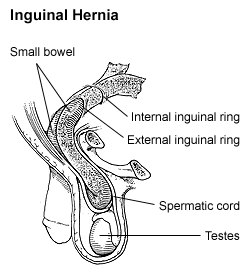Development of the gonads
(Redirected from Gonadogenesis)
The development of the gonads is a crucial aspect of embryogenesis in vertebrates. The gonads, which are the primary reproductive organs, develop into either ovaries or testes depending on the genetic sex of the individual. This process is influenced by a complex interplay of genetic, hormonal, and environmental factors.
Early Development[edit | edit source]
The development of the gonads begins with the formation of the genital ridge during the early stages of embryogenesis. The genital ridge arises from the intermediate mesoderm and is located on the medial side of the mesonephros. The cells within the genital ridge proliferate and differentiate to form the bipotential gonad, which has the potential to develop into either ovaries or testes.
Genetic Determination[edit | edit source]
The genetic determination of gonadal development is primarily controlled by the presence or absence of the Y chromosome. In individuals with a 46,XY karyotype, the SRY gene (Sex-determining Region Y) located on the Y chromosome initiates the development of the testes. The SRY gene encodes a transcription factor that triggers the expression of other genes involved in testis development, such as SOX9 and FGF9.
In individuals with a 46,XX karyotype, the absence of the SRY gene leads to the development of the ovaries. The WNT4 and RSPO1 genes play significant roles in ovarian development by promoting the differentiation of the bipotential gonad into ovarian tissue.
Hormonal Influence[edit | edit source]
Hormones play a critical role in the differentiation and maturation of the gonads. In males, the Leydig cells of the testes produce testosterone, which is essential for the development of male secondary sexual characteristics and the maintenance of spermatogenesis. The Sertoli cells produce anti-Müllerian hormone (AMH), which causes the regression of the Müllerian ducts.
In females, the granulosa cells of the ovaries produce estrogens, which are crucial for the development of female secondary sexual characteristics and the regulation of the menstrual cycle. The theca cells produce androgens, which are precursors to estrogens.
Disorders of Gonadal Development[edit | edit source]
Disorders of gonadal development can result in a range of conditions, including gonadal dysgenesis, intersex variations, and sex chromosome abnormalities. These conditions can affect the development and function of the gonads, leading to issues with fertility and sexual development.
Conclusion[edit | edit source]
The development of the gonads is a complex process that involves the coordinated action of genetic, hormonal, and environmental factors. Understanding this process is essential for diagnosing and treating disorders of sexual development and for advancing reproductive medicine.
See Also[edit | edit source]
- Embryogenesis
- Sexual differentiation
- Genetic sex determination
- Hormonal regulation
- Reproductive system
| Developmental biology |
|---|
|
|
Search WikiMD
Ad.Tired of being Overweight? Try W8MD's physician weight loss program.
Semaglutide (Ozempic / Wegovy and Tirzepatide (Mounjaro / Zepbound) available.
Advertise on WikiMD
|
WikiMD's Wellness Encyclopedia |
| Let Food Be Thy Medicine Medicine Thy Food - Hippocrates |
Translate this page: - East Asian
中文,
日本,
한국어,
South Asian
हिन्दी,
தமிழ்,
తెలుగు,
Urdu,
ಕನ್ನಡ,
Southeast Asian
Indonesian,
Vietnamese,
Thai,
မြန်မာဘာသာ,
বাংলা
European
español,
Deutsch,
français,
Greek,
português do Brasil,
polski,
română,
русский,
Nederlands,
norsk,
svenska,
suomi,
Italian
Middle Eastern & African
عربى,
Turkish,
Persian,
Hebrew,
Afrikaans,
isiZulu,
Kiswahili,
Other
Bulgarian,
Hungarian,
Czech,
Swedish,
മലയാളം,
मराठी,
ਪੰਜਾਬੀ,
ગુજરાતી,
Portuguese,
Ukrainian
Medical Disclaimer: WikiMD is not a substitute for professional medical advice. The information on WikiMD is provided as an information resource only, may be incorrect, outdated or misleading, and is not to be used or relied on for any diagnostic or treatment purposes. Please consult your health care provider before making any healthcare decisions or for guidance about a specific medical condition. WikiMD expressly disclaims responsibility, and shall have no liability, for any damages, loss, injury, or liability whatsoever suffered as a result of your reliance on the information contained in this site. By visiting this site you agree to the foregoing terms and conditions, which may from time to time be changed or supplemented by WikiMD. If you do not agree to the foregoing terms and conditions, you should not enter or use this site. See full disclaimer.
Credits:Most images are courtesy of Wikimedia commons, and templates, categories Wikipedia, licensed under CC BY SA or similar.
Contributors: Prab R. Tumpati, MD

